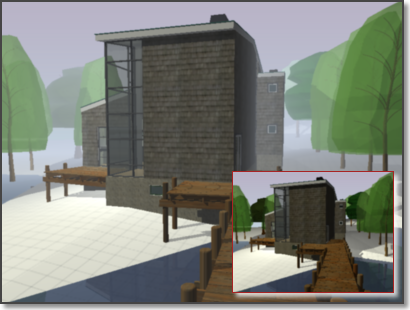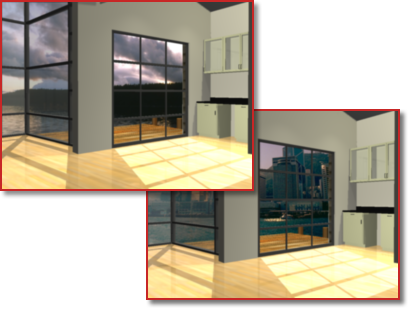You can use environmental features to set up atmospheric effects or background images.
You can enhance a rendered image by means of atmospheric effects like fog and depth cueing or by adding a bitmap image as a background.
Fog and depth cueing are very similar atmospheric effects that cause objects to appear to fade as they increase in distance from the camera. Fog uses a white color while depth cueing uses black.

The RENDERENVIRONMENT command is used to set up fog or depth cue parameters. The key parameters you’ll set are the color of the fog or depth cueing, the near and far distances, and the near and far fog percentages.
Fog and depth cueing are based on the front or back clipping planes of your camera coupled with the near and far distance settings on the Render Environment dialog box. For example, the back clipping plane of a camera is active and located 30 feet from the camera location. If you want fog to start 15 feet from the camera and spread away indefinitely, you set the Near Distance to 50 and the Far Distance to 100.
The density of the fog or depth cueing is controlled by the Near and Far Fog Percentages. These settings have a range of 0.0001 to 100. Higher values mean the fog or depth cueing is more opaque.
A background is basically a backdrop that displays behind your model. Backgrounds can be a single color, a multi-color gradient, or a bitmap image.

Backgrounds work best when you are rendering still images, or animations in which the view doesn’t change or the camera doesn't move. You set backgrounds from the View Manager. Once set, the background is associated with the named view or camera and is saved with the drawing.